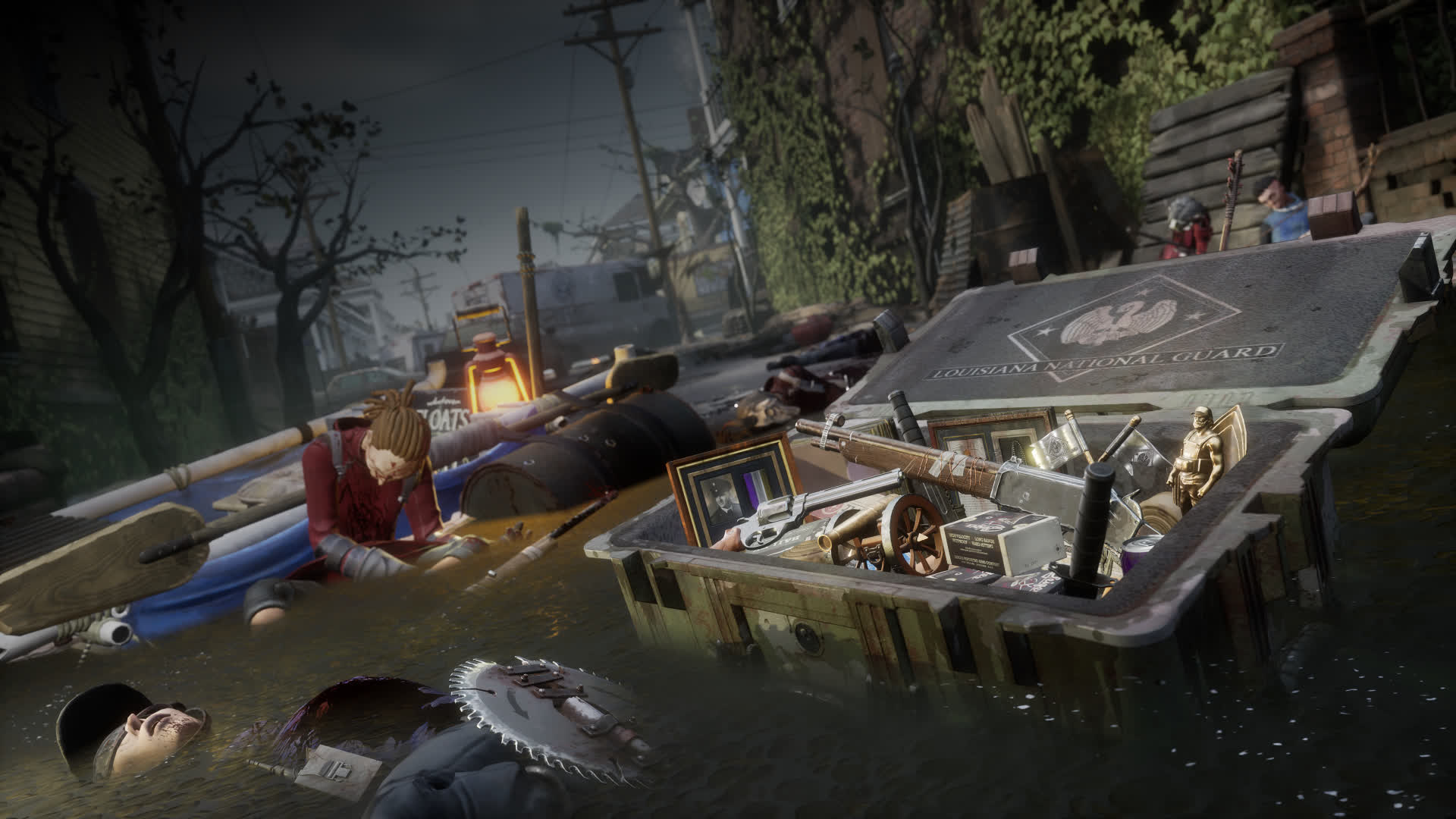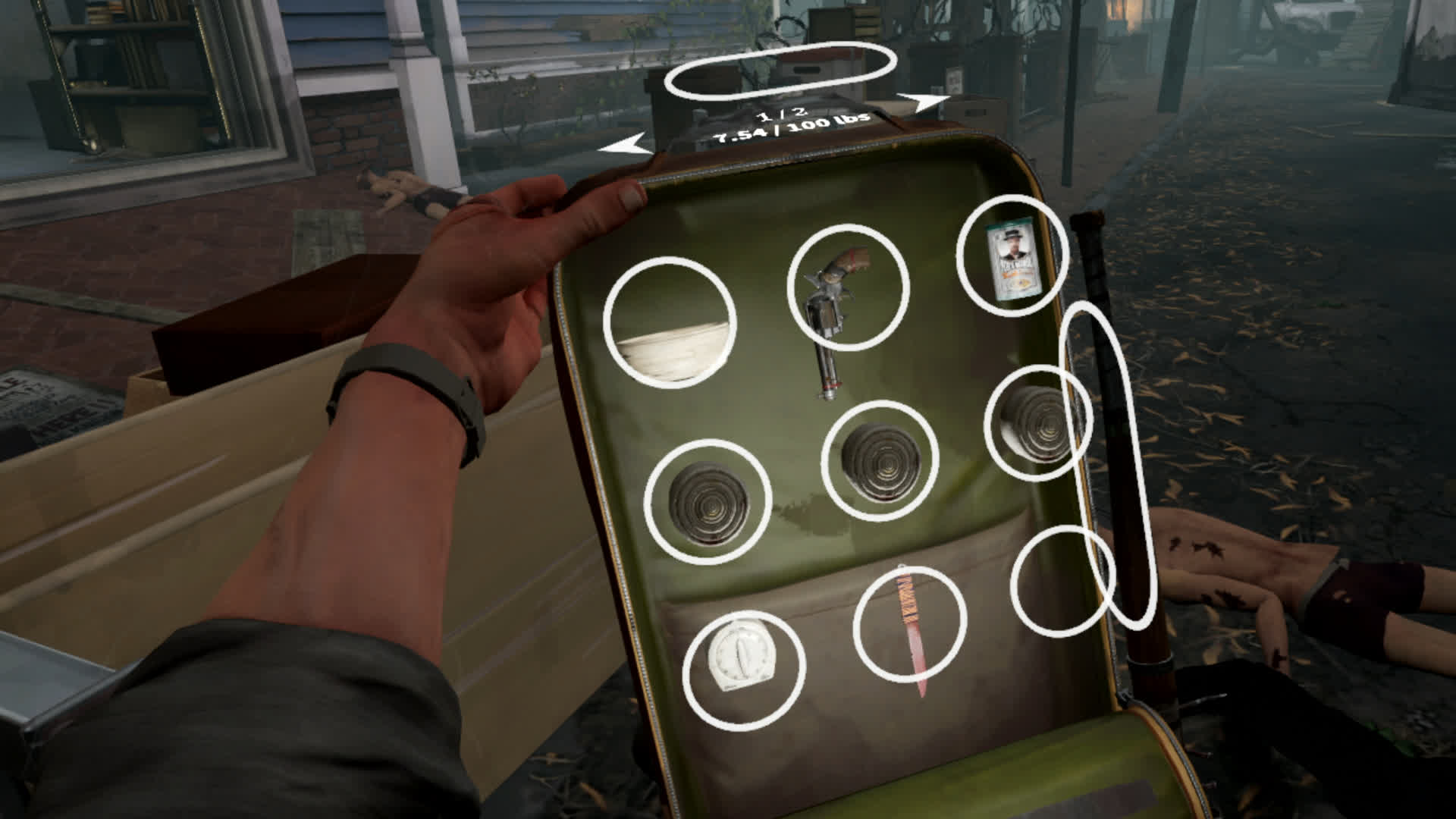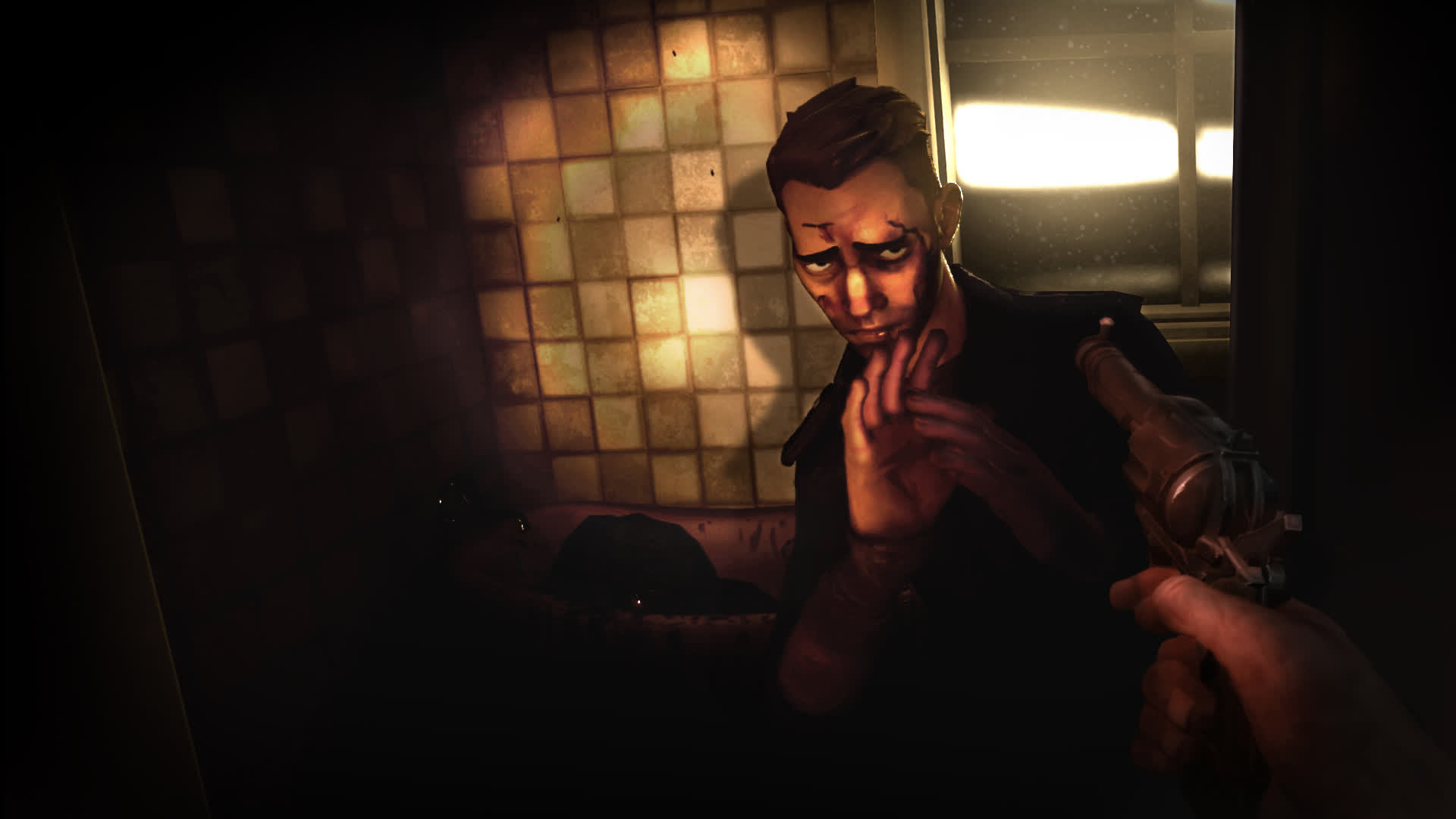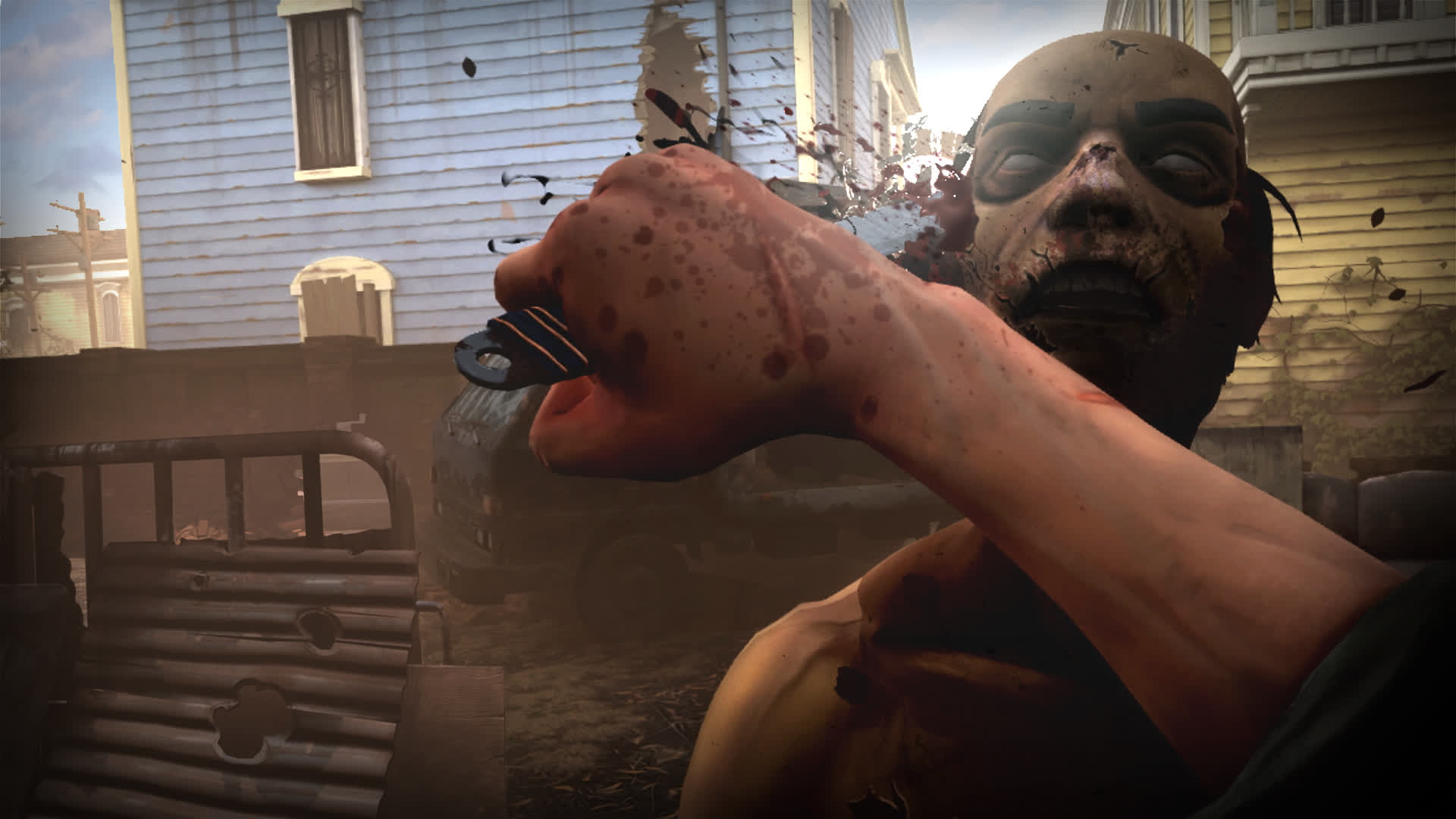Interview: What is it Like to Develop a Game in VR?
The jump scare is a trope used in many horror video games. It features a build-up of suspense, the muting of music, and then a sudden, horrific or terrifying surprise. Bingo, jump scare!
But the building of atmosphere is a significant part of that, and these days if you want immersion, nothing can beat virtual reality. Few games nail the ambiance as The Walking Dead: Saints & Sinners from Skydance Interactive.
This first-person zombie survival game oozes atmosphere and suspense. You don't even need a jump scare to get you in the mood. The sound of the undead shuffling around echoes off a gravestone or wall. You can hear a zombie murmur or the calls for help from other survivors in the distance.
Fighting the undead isn't for the meek. You can use a variety of weapons to protect yourself from turning into another one of the hordes but you have to be precise since only headshots will put the zombies down for good. Guns require careful aim, and the noise can sometimes attract more trouble than they're worth. Other melee weapons require a thorough swing or stab to finish off a zombie. The effort required to do the job makes you feel like you're really in a post-apocalyptic Louisiana, fighting for your life.

Creating this kind of ambiance isn't easy, especially in comparison to a non-VR game. Everything plays out in 3D video and surround sound, aided with motion controls to draw you in from the moment you put on your headset. Some VR games can feel like tech demos by showing off just one specific feature. Military shooters like Onward, Pavlov, and Contractors feature realistic gun handling, while Half-Life: Alyx and Boneworks demonstrate complex physics. Asgard's Wraith and Blade and Sorcery feature weighty melee combat. But The Walking Dead: Saints & Sinners incorporates almost all of that together within a 15-plus hour campaign.
New Mechanics or Just the Most Natural Way to Play?
It was a development process that Mark Domowicz, Project Director explains was full of challenges. "I think the principal challenge is the sheer amount of invention required to make VR games today," he explains via email. "Even now, there is no established best way to do anything in VR. VR simply does not have the long history of titles to draw solutions from, the way non-VR titles do."
However, his team kept observing how gamers played and adapted. "One of the great things about VR games is that often the solution to a design problem is the most instinctual one," Domowicz said. "We just have to ask ourselves "what would you do in real life," or better, simply give the game to new users and observe how they try to solve the problems before them."

He describes how players instinctually wanted to throw items over their shoulders to stash them in the character's backpack. "The prevalence of this instinctual behavior made us implement it!"
Additionally, like other survival games, The Walking Dead: Saints & Sinners has the player tending to their wounds. This requires the player to mime the action of wrapping a bandage around their arm to heal up. "In some cases, the design was so obvious, it seemed funny as we thought about explaining it to new users," said Domowicz. "We laughed when we thought about the eating tutorial. Like, how do you explain to users how to eat without sounding silly, as in, "hold the food to your mouth"?"
Other features, like smoking or breaking bottles to use them as weapons came as a direct result of Skydance Interactive observing playtesters. The team tried to tap into the natural human instinct as a source of new design and new solutions. "[It] really is a product of VR and the type of 1:1 presence only VR can give you," he said.
Scaling Platforms, Performance and Mitigating Motion Sickness
When consumer VR headsets showed up, they had a reputation for being for hardcore enthusiasts, and games had pretty steep system requirements. As games develop beyond just on-rail shooters and add more interactivity and other mechanics, there is also a concern about performance and scaling for lower-end systems.

"We always have to be aware of the potential to cause motion sickness and avoid or minimize that as much as possible," said Domowicz. "At least in our own studio, there was a big leap in ambition between our first VR attempts and The Walking Dead: Saints & Sinners. When VR was very new, the questions of sickness, performance, and how to solve the problems around them, dominated so much of our thinking that there was little room left to even consider big ambitious game designs. Additionally, the worries these problems engendered made us too timid to come up with big designs anyway, even if the mental space was available."
In-game movement in VR can be a strong trigger for nausea, as well as poor performance. Unlike other VR games like Half-Life Alyx or Robo Recall, The Walking Dead Saints & Sinners doesn't use a teleportation mechanic for player movement, but offers a few ways to get around using a controller.
Some players may prefer the snap turning, while others find the smooth turn option less jarring and less likely to cause motion sickness. There are also other settings like tunnel vision or blinders to help reduce nausea while keeping players immersed.
Another way to avoid motion sickness is through smooth performance. Stutter and low FPS in VR can not only deter from immersion but can potentially make players sick.
"[We needed] to ensure our designs can be made to run fast even on lower-end VR hardware, said Domowicz. "Our past experience has helped us quite a bit. Many of us here at Skydance Interactive are longtime industry veterans, some of us having worked on PlayStation and Nintendo 64 titles. So we know a thing or two about performance engineering."
While The Walking Dead: Saints & Sinners originally launched on PC through the Oculus and Steam stores, it's now available on a wider variety of hardware including the last-generation PlayStation 4 and the standalone Oculus Quest, which is powered by a relatively limited Arm SoC.
"I still look back at our first VR title, Archangel, and how we struggled to get it running and feeling good on the PlayStation 4. We legitimately felt that that was about as good as we could make a VR game on that platform and it was just an on-rails shooter! Fast forward to today and we have Saint and Sinners, with free movement, semi-open world environments, and gameplay simulations many orders of magnitude more complicated than what we had in Archangel, yet running on the same platform."
Bringing The Walking Dead Game to Life

Finally, it's worth pointing out The Walking Dead franchise is massive. The original comic series ran for an impressive 193 issues. There are three TV series adapted from the comics as well as a web series, with more to come. A film series is in the works, too.
However, when it comes to the video games in The Walking Dead Franchise, there have been very few hits. While Telltale Games' series of episodic content holds a strong 89 percent on Metacritic, other TWD games have seen far less success. The 2013 game The Walking Dead: Survival Instinct for the PC holds a 38 percent on Metacritic, while the Xbox 360 and PlayStation 3 versions are even lower. The mobile game, The Walking Dead: Road To Survival holds a 73 percent rating. The 2018 PC game Overkill's The Walking Dead also fell flat with a 51 rating on Metacritic.
Despite being on a relatively limited platform, The Walking Dead: Saints & Sinners holds an 81 rating on Metacritic, which relatively speaking to previous games in the franchise, is a huge win for gamers and fans of The Walking Dead.
"The Walking Dead is such a venerable and well-loved universe," said Domowicz. "We felt a good deal of pressure to do it justice, and really deliver an experience that is both faithful and worthy to the fans of The Walking Dead name."

As a result of the developer's enthusiasm for the franchise, the game feels far more immersive than a generic zombie survival game. But the quality poured into it demonstrates the momentum that's growing in the VR space.
"I think our trajectory is at least partially paralleled by the VR industry at large," said Domowicz. "Already a wave of "higher ambition" titles have come out, with games like Asgard's Wrath and Half-Life Alyx, and with more yet to come, I see the rise in ambition only continuing and making VR gaming more interesting and more viable for larger and larger audiences."
"We had a blast making The Walking Dead: Saints & Sinners," he added. "For me personally, it was the last six months that were the most exciting. This is when all of our designs were coming together into a cohesive whole, and you could feel the game and world come to life. The potential for greatness was there, we just had to play our cards right."
The ambition looks to be paying off, with Skydance Interactive announcing that the game has cleared the $50 million sales mark across all platforms last month. While it still seems like VR games and headsets are niche, this kind of sales performance over the past year shows that the medium is building momentum. "All our indicators are showing a very promising trajectory," said Domowicz.
Last year, the game received the Meatgrinder Update that added a tense wave-style arcade mode called The Trials. The development team also recently launched the Aftershocks update for the game, another free content update that arrived over a year after the game's initial release.
The update continues the story from the main game, remixes old maps, and adds new traps as players travel around, with gamers claiming up to 10 hours of additional gameplay. The developer also teased more updates on the horizon.
From the suspenseful and scary atmosphere to the natural healing mechanics and various comfort settings, The Walking Dead: Saints & Sinners demonstrates the incredibly immersive potential behind more ambitious VR games. Skydance Interactive is exploring that potential through content updates that have been trickling out for over a year. They say more are coming, welcoming the current VR owners enjoying the game, and new owners joining the fun this holiday season.
"2019, 2020 and 2021 have all improved the space, and the various companies planning big hardware and software investments in VR are very promising signs," adds Domowicz. "On top of that we can tell you that we know of several, 8-figure+ budget games under development. The future of VR is bright, and we are excited to be a part of it."
本文地址:http://signalforexgratis.com/resiko-forex-dan-profitabilitas/
版权声明
本文仅代表作者观点,不代表本站立场。
本文系作者授权发表,未经许可,不得转载。